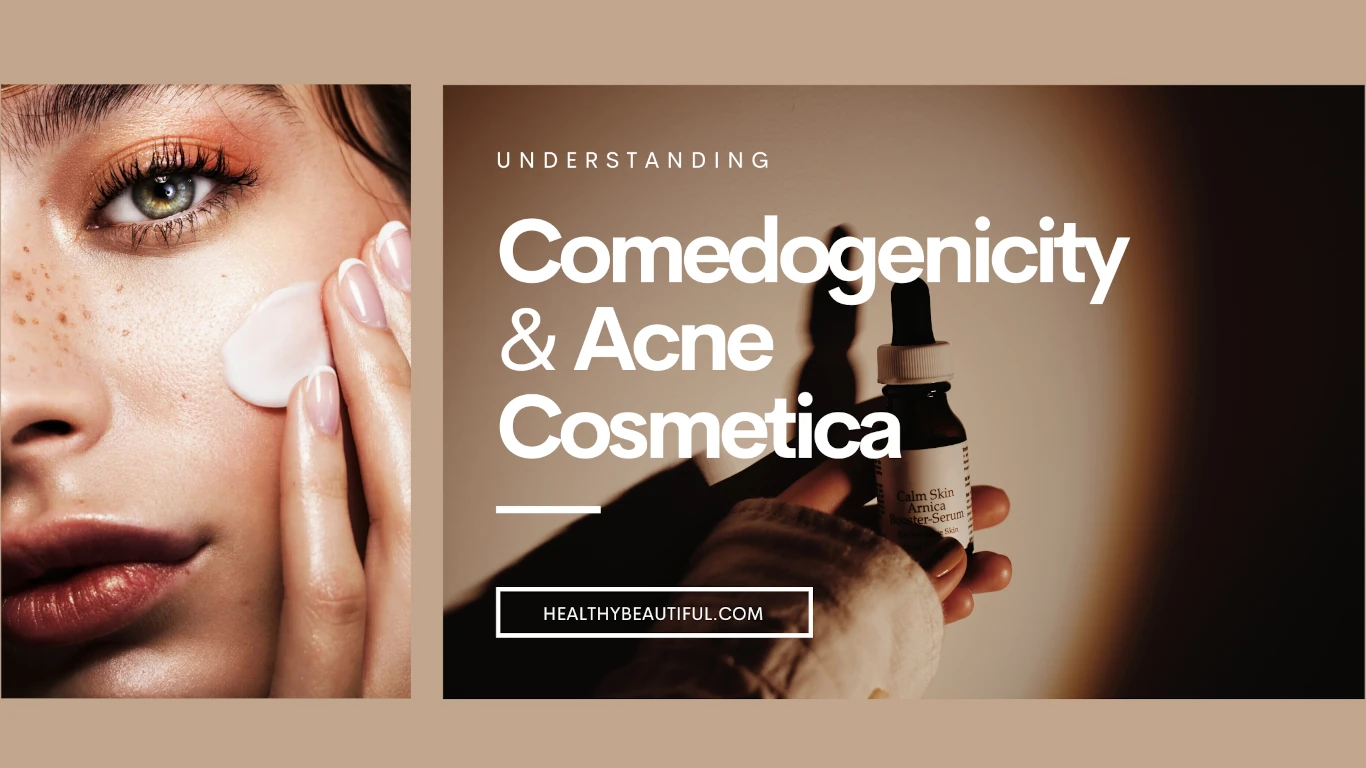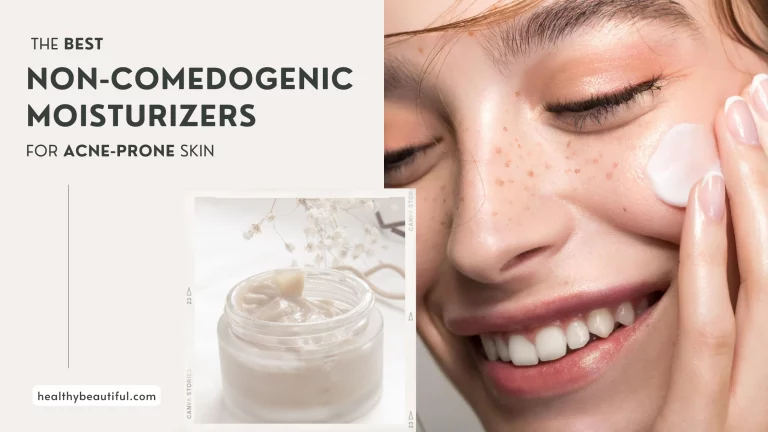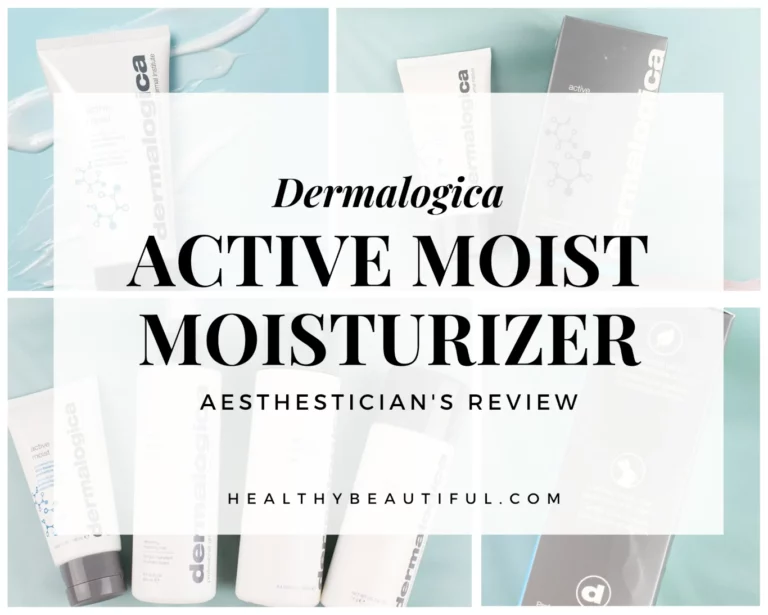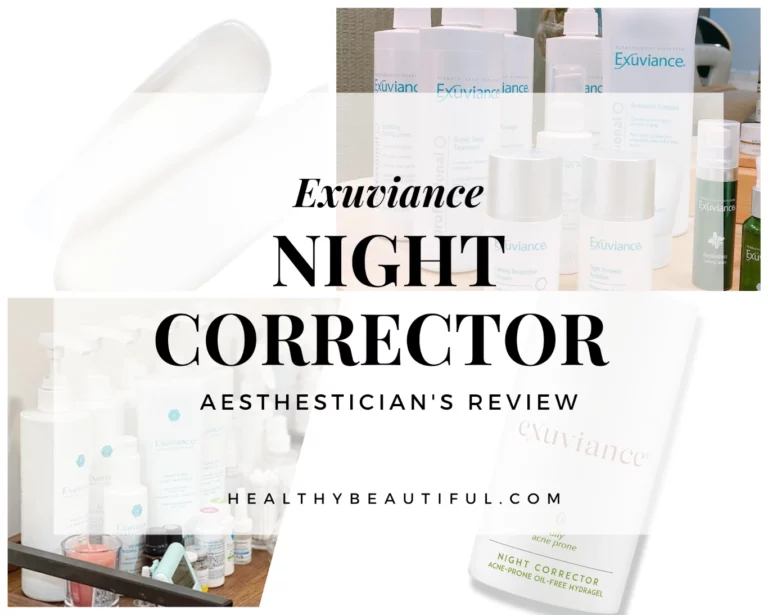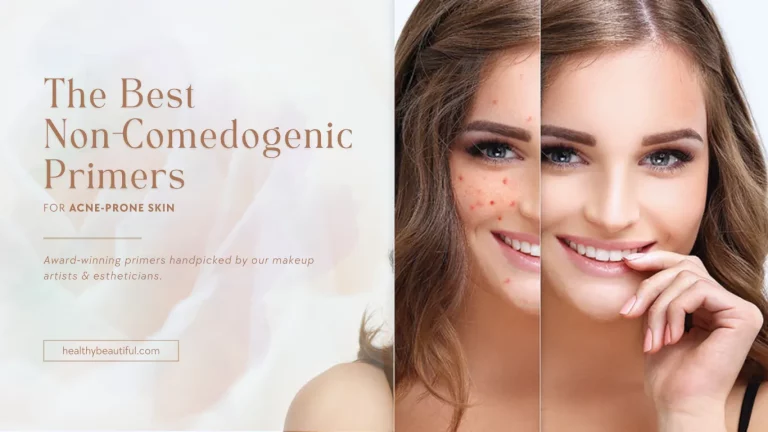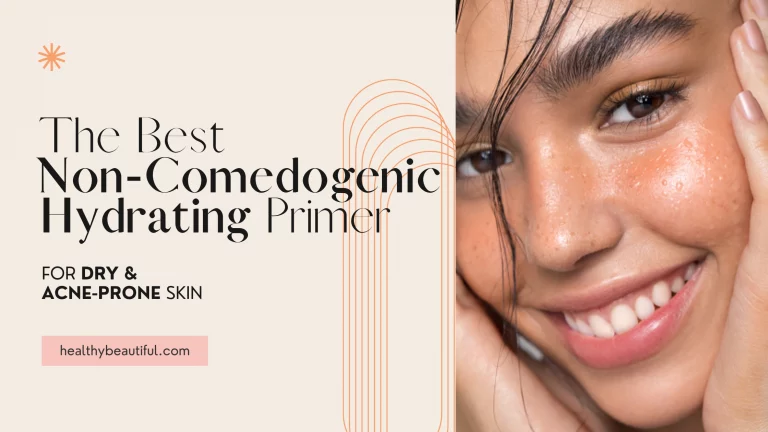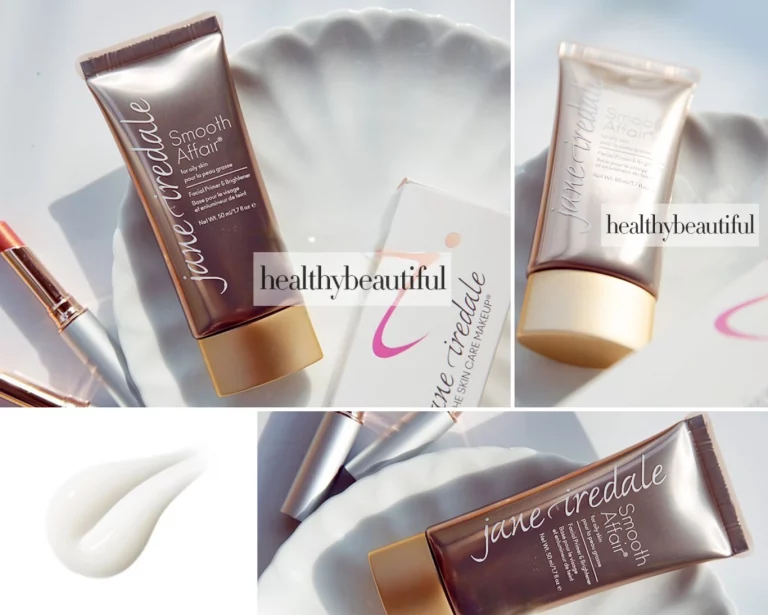Comedogenicity in Skincare & Cosmetics
Acne cosmetica is a type of acne that is linked to cosmetic use.
It is characterized by persistent, mild breakouts due to the interplay between sebum and trapped comedogenic products in makeup.
Comedogenicity, in turn, refers to the potential of an ingredient to cause acne when applied to the skin.
Comedogenicity in skincare and cosmetics has been researched for years, but it has only recently become popular as consumers become more skincare-savvy.
Skincare enthusiasts and specialists scrutinize ingredient lists for labels like “noncomedogenic” or “non-clogging,” hopeful that it will not aggravate acne-prone and sensitized skin.
However, what exactly does this label mean? Does these claims have validity to them?
As we examine comedogenicity in more detail, we find that it is a complex and multifaceted topic.
This literature review examines common ingredients found in makeup products that act as comedogenic irritants and explores dermatologic recommendations to address beauty product use in acne-prone patients.
Key Points:
As estheticians, our recommendations for patients with acne cosmetica include the following:
- Avoid comedogenic products and switch to acne-friendly, safe ingredients for the skin.
- Use topical products containing ingredients such as retinol and salicylic acid to yield visible and noticeable results.
- Select appropriate, well-tolerated, and non-comedogenic makeup products containing active ingredients to eradicate acne.
By following these guidelines, patients can make informed decisions about the beauty products they use and effectively address their acne concerns.
We strive to provide our clients with the most up-to-date information and recommendations to achieve healthy and radiant skin.
Definition & Importance of Understanding Comedogenicity & Acne Cosmetica
Definition of Comedogenicity & Acne Cosmetica
Comedogenicity refers to the ability of a substance to clog pores, while acne cosmetica refers to acne caused or aggravated by cosmetic products.
In other words, comedogenic ingredients have the potential to cause breakouts by blocking your pores, leading to pimples, blackheads, and whiteheads.
Furthermore, these ingredients can also aggravate existing skin conditions such as eczema and psoriasis.
Importance of understanding Comedogenicity & Acne Cosmetica
As estheticians, educating our clients about acne-specific issues is a vital part of our job.
Comedogenicity and acne cosmetica are important concepts to be aware of, especially if you wear makeup or use skincare products regularly.
Certain items, such as heavy creams or oil-based makeup, are more likely to be comedogenic and can lead to acne outbreaks.
But not all products are created equal, so we want to help you make better decisions when choosing cosmetics so you can achieve and maintain clear, healthy skin.
What is Comedogenicity?
Definition of Comedones
Comedones are acne lesions that occur when pores become blocked with excess oil, dead skin cells, and other debris. They can appear as whiteheads or blackheads and are common symptoms of acne.
Understanding Comedogenicity
Comedogenicity refers to the tendency of a substance to clog pores and cause comedones. Some people are more prone to comedones than others, and certain substances can worsen the problem.
How Comedogenic Ingredients can cause Acne
Comedogenic ingredients can clog pores and cause acne. It facilitates keratin buildup inside hair follicles—a process known as follicular hyperkeratosis.
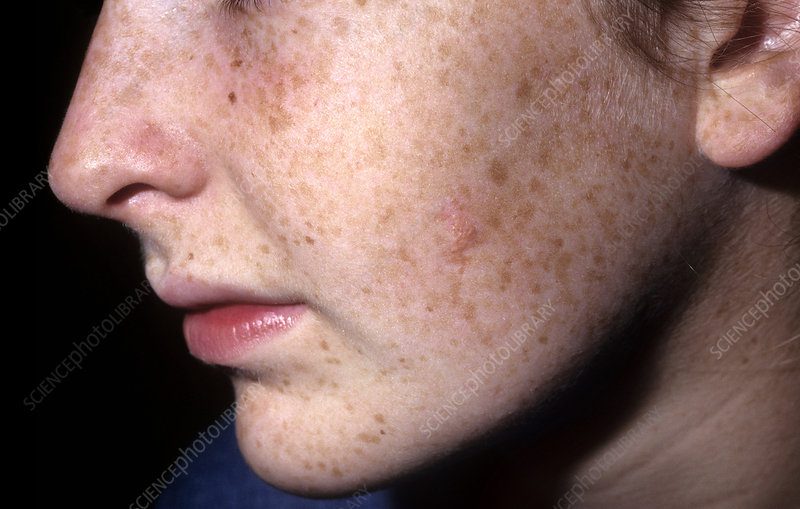
This can lead to the development of more comedones, as well as other types of acne lesions like papules, pustules, and cysts. Breakouts can happen quickly or over a long time as the skin reacts to a highly comedogenic product.
Various factors can influence a product's comedogenicity:
- Concentration – “The dose makes the poison.” The high comedogenicity rating of certain ingredients in their pure form can drop down to non-existent when diluted. E.g., Olive oil is moderately comedogenic at grade 2 but is reduced when mixed with mineral oil and diluted down to 25% concentrations
- Personal skin chemistry – Oily and acne-prone skin develops comedones quicker than dry and non-sensitive skin.
- Product formulation – E.g., A pair of highly comedogenic ingredients is likely unsafe for acne-prone skin. The same ingredients with a significantly lower dose in a formula will not cause the same problem, except for very sensitive skin.
Because a person's unique skin chemistry influences an ingredient's comedogenicity, it varies significantly between people.
It is possible that you do not have a reaction to a product, but another person may have severely congested pores within several days.
The sebum produced by our skin is comedogenic by nature.
Even if people predisposed to congestion avoid all potentially comedogenic products, there's no guarantee they will not experience acne cosmetica.
How can you tell if certain ingredients contribute to clogged pores or breakouts?
Types of Comedogenic Ingredients
The first list of comedogenic ingredients was divided into 12 categories: lanolins, fatty acids, alcohols and sugars, waxes, thickeners, oils, pigments, silicones, sterols, vitamins and herbs, preservatives, miscellaneous ingredients.
Now, comedogenic ingredients are often classified into four categories:
- Highly Comedogenic – These ingredients are the most likely to cause comedones and should be avoided if you're prone to acne.
- Moderately Comedogenic – These ingredients are less likely to cause comedones than highly comedogenic ingredients but can still be problematic for some people.
- Slightly Comedogenic – These ingredients have a low likelihood of causing comedones but may still be problematic for people with very sensitive skin or a history of acne.
- Non-Comedogenic – These ingredients are the least likely to cause comedones and are safe for most people to use.
To avoid contentious ingredients, the lists are not exhaustive but an abbreviated consensus from several well-known records.
Testing Comedogenicity
The rabbit ear test, which was the gold standard for determining comedogenicity for many years, was developed in the 1950s to evaluate the hazards of industrial chemicals. In the 1970s, it was used to test the comedogenicity of cosmetics. Rabbit ears are much more sensitive to comedogenic substances and respond faster than human skin. This makes it easier to detect comedogenic ingredients and evaluate the effects of these substances on the skin.
Dr. James Fulton and Dr. Albert Kligman are credited with popularizing the rabbit ear test in cosmetic research and coining the phrase “acne cosmetica”—which is acne induced by comedogenic cosmetics. They applied chemicals to the rabbit's inner ears and after a few weeks, they evaluated follicular keratosis microscopically and visually.
The first list of comedogenic ingredients was divided into 12 categories, ranked on a scale of 0 to 5. The higher the score, the more comedogenic the ingredient was considered.
- Comedogenic rating 4 – 5 caused a significant increase in the occurrence of large comedones and follicular keratosis throughout the ear, considered very comedogenic.
- Comedogenic rating 2 – 3 only moderately increased follicular keratosis.
- Comedogenic rating 0 – 1 displayed no substantial increase and is considered non-comedogenic.
Human participants are now used in comedogenic testing, as consumers now frown upon animal testing. Patch applications are typically administered to 10-30 participants and tested against a known comedogenic ingredient, with an untreated site tested as a negative control. The back is a frequently chosen site for patch testing, but this depends on the lab. A surface biopsy is performed at the end of the testing phase, and the cells are then examined under magnification. Testing typically lasts four to eight weeks, and the testing conditions can be tailored to the manufacturer.
While facial skin is ideal for testing, it's only viable to test against some skin types and conditions. Additionally, testing against facial skin opens up the test to additional variables, making it harder to get accurate results.
While comedogenicity testing can provide helpful information, it is not a perfect science. Different individuals may have different reactions to the same ingredient, and other factors like skin type, climate, and other skincare products used can also impact the likelihood of acne. Therefore, paying attention to your skin's reactions and adjusting your skincare routine accordingly is always essential.
Validity of Claims Regarding Ingredient Comedogenicity
The standard method of evaluating an ingredient's comedogenicity could be more reliable.
The body's skin responds differently to facial skin, and the testing time needs to be increased.
Several factors contribute to discrepancies in comedogenic ingredient lists:
- The concentration of ingredients in the formula is key. Combinations of ingredients can alter a comedogenic component into a non-comedogenic element and vice versa.
- How an ingredient is extracted and processed is also critical. An ingredient's refinement, hydrogenation, or fractionation can significantly alter its comedogenicity ranking.
- The raw material's origin can influence its rating.
Unfortunately, reading an ingredient label will not reveal these variables.
The Food and Drug Administration (FDA) does not specify a list of ingredients that must be excluded for a product to be labeled “non-comedogenic.”
Any business can claim its product is non-comedogenic and still comply with FDA guidelines.
No standardized testing or regulatory agencies detect claim misuse.
Third-party testing of a complete formula on human skin is the best way to determine whether or not a product is comedogenic.
However, third-party testing is costly, and few cosmetic companies go the extra mile.
Comedogenic ingredient listings can serve as guidelines, but only a few ingredients—in all of their forms—have consistently demonstrated comedogenicity in scientific studies.
Table 1: Comedogenic Ingredients
This table lists highly comedogenic ingredients and where they are commonly found.
| wdt_ID | Ingredient | Comedogenic Rating | Found in: |
|---|---|---|---|
| 1 | Glyceryl Stearate | 0 | moisturizers, cleansers, and makeup |
| 2 | Lanolin | 1-2 | lip balms, body lotions, and face creams |
| 3 | Isopropyl Myristate | 5 | face creams, body lotions, and makeup |
| 4 | Acetylated Lanolin Alcohol | 4 | lotions, body creams, and lip products |
| 5 | Myristyl Lactate | 3 | facial creams and body lotions |
| 6 | Octyl Palmitate | 4 | face creams, sunscreens, and body lotions |
| 7 | Isopropyl Isostearate | 5 | lipsticks and face creams |
| 8 | Stearyl Heptanoate | 4 | sunscreens and facial creams |
| 9 | PPG-2 Myristyl Ether Propionate | 4 | sunscreens and body lotions |
| 10 | Butyl Stearate | 4 | face creams and body lotions |
| 11 | Stearic Acid | 2-3 | soaps, body washes, and face creams |
| 12 | Lauric Acid | 4 | soaps, body washes, and face creams |
| 13 | Sodium Lauryl Sulfate | 5 | shampoos, body washes, and toothpaste |
| 14 | Sodium Laureth Sulfate | 3-5 | shampoos, body washes, and facial cleansers |
| 15 | Oleic Acid | 2 | soaps, body washes, and face creams |
| 16 | Decyl Oleate | 3 | sunscreens and facial creams |
| 17 | Laureth-23 | 5 | shampoos and hair styling products |
| 18 | Propylene Glycol Monostearate | 3-4 | body lotions and sunscreens |
| 19 | Cetearyl Alcohol | 2 | lotions, sunscreens, and hair conditioners |
| 20 | Myristyl Myristate | 3 | facial creams and body lotions |
| 21 | Butylated Hydroxyanisole (BHA) | 2 | lip balms and moisturizers |
| 22 | Isostearyl Neopentanoate | 5 | facial creams and makeup |
| 23 | Isocetyl Stearate | 4 | facial creams and body lotions |
| 24 | PPG-15 Stearyl Ether | 3 | facial creams and body lotions |
| 25 | Steareth-10 | 2 | facial creams and hair styling products |
| 26 | Steareth-20 | 2 | facial cleansers and makeup |
| 27 | Wheat Germ Glycerides | 5 | facial creams and body lotions |
| 28 | Ceteareth-20 | 4 | facial creams and makeup |
| 29 | Soybean Oil | 3 | body lotions and facial creams |
| 30 | Hydrogenated Vegetable Oil | 4 | lipsticks and lip balms |
| 31 | Cotton Seed Oil | 3 | body lotions and facial creams |
| 32 | Mink Oil | 3-4 | facial creams and body lotions |
| 33 | Cocoa Butter | 4 | body lotions and facial creams |
| 34 | Coconut Butter | 4 | body lotions and facial creams |
| 35 | Lanolin Alcohol | 2-3 | body lotions and facial creams |
| 36 | Isostearyl Isostearate | 4 | facial creams and body lotions |
| 37 | Polyethylene Glycol (PEG) | 3-4 | body washes, shampoos, and facial cleansers |
| 38 | Triethanolamine (TEA) | 5 | facial cleansers and toners |
| 39 | D&C Red No. 17 | 4 | lipsticks and lip balms |
| 40 | D&C Red No. 19 | 4 | lipsticks and lip balms |
| 41 | D&C Red No. 21 | 4 | lipsticks and lip balms |
| 42 | Wheat germ oil | 5 | moisturizers, face oils, and hair products) |
| 43 | Isopropyl myristate | 5 | lotions, creams, and makeup) |
| 44 | Oleic acid | 2 | moisturizers, facial cleansers, and makeup) |
| 45 | Decyl oleate | 3 | sunscreens and moisturizers) |
| 46 | Cetearyl alcohol | 2 | moisturizers, sunscreens, and makeup) |
| 47 | Coconut oil | 4 | moisturizers, body scrubs, and hair products) |
| 48 | Soybean oil | 3 | moisturizers, cleansers, and hair products) |
| 49 | Peanut oil | 2 | moisturizers and massage oils) |
| 50 | Cottonseed oil | 3 | moisturizers, body washes, and hair products) |
| 51 | D & C red dyes | 4 | makeup) |
| 52 | FD & C yellow dyes | 4 | makeup and hair dyes) |
| 53 | FD & C red dyes | 4 | makeup and hair dyes) |
| 54 | FD & C blue dyes | 4 | makeup and hair dyes) |
| 55 | Mink oil | 3-4 | moisturizers and eye creams) |
| 56 | Acetylated lanolin | 4 | moisturizers, body washes, and hair products) |
| 57 | Paraffin wax | 2 | lip balms, body lotions, and hair products) |
| 58 | Coal tar | 3-4 | dandruff shampoos and psoriasis treatments) |
| 59 | Sodium lauryl sulfate | 5 | shampoos, body washes, and toothpaste) |
| 60 | Sodium chloride | 5 | shampoos, conditioners, and body washes) |
| 61 | Triethanolamine | 5 | sunscreens, makeup, and hair products) |
Note: Properties, benefits, and common uses were gathered from cosmetic industry and scientific literature sources.
Table 2: Non-Comedogenic Ingredients
This table shows ingredients that are frequently mislabeled as highly comedogenic but are not.
| Ingredient | Comedogenic Rating |
|---|---|
| Butylene Glycol | 1 |
| Cholesterol | 2 |
| Cyclomethicone | 1 |
| Dimethicone | 1 |
| Emulsifying Wax National Formulary (NF) | 2 |
| Glycerin | 0 |
| Iron Oxides | 0-2 (depending on the specific oxide) |
| Isopropyl Alcohol | 0 |
| Methylparaben | 0 |
| Oxybenzone | 0 |
| Petrolatum | 0 |
| Propylene Glycol | 0 |
| Propylparaben | 0 |
| Squalane | 1 |
| Shea Butter | 0-2 (depending on source) |
| Specially Denatured (SD) Alcohol | 5 |
| Talc | 0-1 (depending on the specific type) |
Note that comedogenic ratings can vary based on the individual and the specific product/formulation, so these ratings should be taken as a general guide and not applicable to all finished products.
What is Acne Cosmetica?
Definition of Acne Cosmetica
Acne cosmetica is a type of acne that is caused by the use of cosmetic products. It is non-inflammatory acne that usually appears as small bumps or comedones on the skin.
How Cosmetics can cause Acne
Cosmetics can cause acne by clogging the pores on the skin, which leads to the formation of comedones. This happens when the ingredients in cosmetics mix with the skin's natural oils and dead skin cells to create a plug in the hair follicle. The plug can become infected with bacteria, leading to the development of acne.
Types of Cosmetics that can cause Acne
Not all cosmetics can cause acne, but certain types of cosmetic formulations are more likely to cause it.
Here are some examples:
- Foundation – Heavy liquid and cream foundations are more likely to cause acne than lightweight ones. They contain oils and other ingredients that can clog pores.
- Powder – Loose or pressed powder can also cause acne, especially if it contains ingredients like talc, which can clog pores.
- Blush – Powder or cream blush can cause acne, particularly if it contains oils or other pore-clogging ingredients.
- Moisturizer – Moisturizers that are too heavy or contain oils can clog the pores and lead to acne.
- Sunscreen – Some sunscreens contain ingredients that can clog pores and cause acne. Look for non-comedogenic options if you have acne-prone skin.
- Hair Products – Hair products like gels, mousses, and hairsprays can cause acne around the hairline and forehead.
How to identify Cosmetics that can cause Acne
You can also look for products labeled “non-comedogenic” or “oil-free,” which means they are less likely to cause acne.
Also, avoid heavy, thick, or greasy products, and opt for lighter formulas.
Choosing the Right Products to Prevent Acne Cosmetica
Choosing the right products for your acne-prone skin can be daunting, but with the following tips, you can make informed choices.
- Understand the comedogenicity theory. While resisting a product you love may be challenging, it may not be the best choice if it contains comedogenic ingredients.
- Check the ingredient labels. Some companies may need a complete ingredient list for their product, so it's prudent to research it online or contact the manufacturer for complete information.
- Be cautious of similar-sounding ingredients. Just because an ingredient name sounds the same doesn't mean it is the same. Keep a list of similar ingredients that have different effects.
- Recognize comedogenic ingredients. Emulsifiers, thickeners, surfactants, waxes, and oils are all ingredients that can cause acne. It's essential to remember that “oil-free” does not always mean “non-comedogenic.”
- Choose brands that perform independent third-party comedogenic testing. Look for reputable labs that test the products and provide research findings to support their non-comedogenic claims. If there's no third-party testing available, inquire about the research that led them to conclude their product is non-comedogenic.
Take Extra Precautions
If you have acne-prone skin, it's best to avoid known comedogenic ingredients, but keep in mind that a product containing such ingredients isn't necessarily bad. It could be suitable for someone with drier skin and smaller pores.
However, to take extra precautions, you can:
- Be mindful of your skin type. If you have oily or acne-prone skin, avoiding products containing a lot of comedogenic ingredients is best.
- Do a patch test. Before using a new product, apply a small amount to your skin and wait 24-48 hours to see if it causes any adverse reactions.
- Introduce new products slowly. Only introduce a few new products to your routine at a time. Give your skin time to adjust to one new product before adding another.
- Opt for non-comedogenic and oil-free products. Look for products labeled “non-comedogenic” or “oil-free” as they are less likely to clog pores.
- Choose products designed for acne-prone skin. These products are “non-acnegenic” or formulated to be non-comedogenic and contain ingredients that can help fight acne.
Taking these extra precautions can reduce the risk of aggravating your acne or causing new breakouts.
RELATED: NON-COMEDOGENIC SKINCARE
The Best Non-Comedogenic Moisturizers for Acne-Prone Skin
Dermalogica – Active Moist Oil-Free, Lightweight Face Moisturizer Review
Exuviance – Night Corrector Acne-Prone, Oil-Free Hydragel Review
MDSolarSciences – Daily Perfecting Moisturizer SPF 30 Review
Prevention and Treatment of Comedogenicity & Acne Cosmetica
Prevention of Comedogenicity
- Reading Labels – One of the most effective ways to prevent comedogenicity is to carefully read the ingredient labels of skincare and makeup products before purchasing and using them. Avoid products containing comedogenic ingredients and products with fragrances, dyes, and other potential irritants.
- Patch Testing – Patch testing can help identify potential product allergens or irritants. Apply a small amount of the product on the inner arm and wait for 48-72 hours to see if there is any adverse reaction.
- Using Non-Comedogenic Products – Choose products labeled as non-comedogenic or oil-free to help prevent breakouts.
Treatment of Comedogenicity
- Cleansing – Regular cleansing helps to remove excess oil, dirt, and dead skin cells that can clog pores. Use a gentle cleanser suitable for your skin type twice a day.
- Exfoliating – Regular exfoliation helps to remove dead skin cells and debris that can clog pores. Use a gentle exfoliating product once or twice a week.
- Using Topical Retinoids – Topical retinoids, such as tretinoin, adapalene, and tazarotene, are vitamin A derivatives that help to unclog pores, reduce inflammation, and promote cell turnover. They are available by prescription from dermatologists.
- Chemical Peels – Chemical peels can help to exfoliate the skin, unclog pores, and reduce inflammation. A dermatologist can provide chemical peels with glycolic acid, salicylic acid, or other peeling agents.
Prevention of Acne Cosmetica
- Choosing Cosmetics Carefully – Choose cosmetics labeled as non-comedogenic, oil-free, and fragrance-free. Also, opt for lightweight, sheer formulations that are less likely to clog pores.
- Cleaning Your Makeup Tools Regularly – Clean makeup brushes and sponges regularly to prevent the buildup of bacteria and other potential irritants.
- Washing Your Face Thoroughly – Wash your face thoroughly every night to remove all makeup, oil, and debris that can clog pores.
Treatment of Acne Cosmetica
- Discontinuing Use of Problematic Cosmetics – Discontinue using cosmetics that have caused breakouts or irritation.
- Using Non-Comedogenic Products – Switch to non-comedogenic products to prevent future breakouts.
- Seeing a Skincare Professional for Further Treatment – If acne persists or becomes severe, consult a dermatologist or esthetician for further evaluation and treatment options.
RELATED: NON-COMEDOGENIC MAKEUP
Top 12 Best Silicone-Based Primers for for Deep Wrinkles, Acne Scars, & Large Pores
Top 18 Best Non-Comedogenic Primers for Acne-Prone Skin
Top 10 Best Non-Comedogenic Hydrating Primers for Dry & Acne-Prone Skin
jane iredale – Smooth Affair® Oily Skin Face Primer Review
Conclusion
Understanding comedogenicity and acne cosmetica is crucial for anyone who wants to achieve clear and healthy skin.
Comedogenic ingredients in skincare and cosmetic products can clog pores, leading to acne breakouts and other skin irritations.
By being aware of the comedogenic ingredients and their ratings, individuals can make informed decisions when choosing products that are less likely to cause skin problems.
When it comes to skincare and cosmetic products, it's essential to prioritize skin health over aesthetics. While some products may offer immediate benefits, they can have adverse effects on the skin in the long run.
Choosing non-comedogenic products that are suitable for your skin type is crucial for achieving and maintaining clear and healthy skin.
If you are struggling with acne or other skin irritations, seek help from a dermatologist who can provide professional advice on the best treatment options for your skin.
Additionally, by reading and understanding product labels and ingredient lists, you can make informed decisions when choosing skincare and cosmetic products that are less likely to cause skin problems.
Remember, preventing comedogenicity and acne cosmetica is all about being proactive and prioritizing skin health.
References:
- Draelos, Zoe Diana, and Joseph C. DiNardo. “A re-evaluation of the comedogenicity concept.” Journal of the American Academy of Dermatology 54.3 (2006): 507-512.
- Fulton, J. E. “Comedogenicity and irritancy of commonly used ingredients in skin care products.” J. Soc. Cosmet. Chem 40 (1989): 321-333.
- Fulton Jr, J. E., et al. “Non-comedogenic cosmetics.” Cutis 17.2 (1976): 344-5.
- Fulton Jr, James E., Stephen R. Pay, and James E. Fulton III. “Comedogenicity of current therapeutic products, cosmetics, and ingredients in the rabbit ear.” Journal of the American Academy of Dermatology 10.1 (1984): 96-105.
- Ghani, Hira, et al. “An Investigation of Makeup Ingredients and their Effects on Acne Cosmetica with Dermatologic Practice Recommendations.” SKIN The Journal of Cutaneous Medicine 5.5 (2021): 474-481.
- Kligman, Albert M., and Otto H. Mills. “Acne cosmetics.” Archives of dermatology 106.6 (1972): 843-850.
- Kligman, A. M., and TILLIE KWONG. “An improved rabbit ear model for assessing comedogenic substances.” British Journal of Dermatology 100.6 (1979): 699-702.
- Mills, Otto H., and Albert M. Kligman. “A human model for assessing comedogenic substances.” Archives of Dermatology 118.11 (1982): 903-905.
- Morris, William E., and Shih Chao Kwan. “Use of the rabbit ear model in evaluating the comedogenic potential of cosmetic ingredients.” J. Soc. Cosmet. Chem. 1983.

